Saudi water begins next growth phase
10 March 2023

Saudi Arabia’s National Water Strategy 2030 continues to drive investments in the kingdom’s water desalination, treatment and distribution sector.
The strategy aims to reduce the water demand-supply gap and ensure desalinated water accounts for 90 per cent of the national urban supply to reduce reliance on non-renewable ground sources.
The need to boost the security of supply amid rising demand, volatile costs and increased compliance with sustainability goals is also driving project activity – particularly in terms of using more energy-efficient technologies to convert seawater into potable water – as well as improving storage capacity.
As of March, an estimated 2.66 million cubic metres a day (cm/d) of water desalination capacity is under construction by the main water utility provider Saline Water Conversion Corporation (SWCC) and state water offtaker Saudi Water Partnership Company (SWPC).
At least a further 2.4 million cm/d of capacity is under procurement using both the independent water producer (IWP) model, mainly through SWPC, and the engineering, procurement and construction (EPC) model, primarily via SWCC.
Following the award of successive IWP contracts in 2019-20, SWPC paced the award of new contracts and also tendered new jobs in 2021-22.
As in most sectors and geographies, the Covid-19 pandemic and war in Ukraine impacted project finance costs and inflation in Saudi Arabia, both particularly relevant to IWP projects.
New developments in the latter part of last year and the first few months of 2023, including the imminent award of the contract to develop the Rabigh 4 IWP, indicate that SWPC is reestablishing its projects momentum.
Similarly, there has been increased activity in water desalination EPC projects being procured by SWCC, such as the proposed seawater reverse osmosis (SWRO) facilities in Shuaibah and Yanbu, which have a combined capacity of over 1 million cm/d.
These are in addition to the under-construction Jubail 2 SWRO plant, with a capacity of 1 million cm/d, and the 400,000 cm/d Shuqaiq 1 SWRO facility, whose main contracts were awarded in 2021 and 2020, respectively.
Along with meeting rising demand, these projects address the decarbonisation requirements of Saudi Arabia’s water sector, which the kingdom’s pledge last year to reach net-zero carbon emissions by 2060 has made more urgent.
This drive is highlighted by the Shuaibah 3 IWP project, for which a team led by Riyadh-headquartered utility developer Acwa Power won the directly-negotiated contract in 2022.
The 600,000 cm/d SWRO plant will replace the existing multi-stage flash (MSF)-based desalination unit that is being decommissioned in 2025 at the existing Shuaibah 3 independent water and power project (IWPP).
The Shuaibah 3 project was the lone IWP contract awarded by SWPC last year.
The same carbon emissions reduction incentive is driving the Yanbu 2 SWRO project. According to SWCC, the project aligns with improving the environmental impact of the desalination water unit of Yanbu phase 2.
Power & Water Utility Company for Jubail & Yanbu (Marafiq) owns the Yanbu 2 integrated water and power desalination plant, which came onstream in 2015. Like the Shuaibah 3 IWPP, the facility’s desalination unit utilises the older, energy-intensive MSF technology.
 Saudi Arabia reinvigorates power sector
Saudi Arabia reinvigorates power sector
Other water PPP projects
The procurement processes are proceeding simultaneously for several independent sewage treatment plants (ISTP), water transmission pipelines and water reservoir facilities being overseen by SWPC across Saudi Arabia.
SWPC tendered the first scheme under the third round of its ISTP programme in November. The Al-Haer ISTP will have a design capacity of 200,000 cm/d.
The tender is also expected in the first half of the year for the two other schemes under batch three, the Riyadh East and Khamis Mushait ISTP schemes.
At least five other ISTP projects are in the planning stage.
In November, the Taif ISTP scheme, one of the first-round ISTP projects awarded in 2019, entered commercial operation.
SWPC has received three bids for its first water transmission pipeline public-private partnership (PPP) project, which links Rayis in Medina to Rabigh in Mecca, with prequalification under way for three similar schemes.
Bids are due in April for the contract to develop the kingdom’s first independent strategic water reservoir (ISWR) project. The Juranah ISWR project will be implemented in Mecca, using a build, own, operate and transfer model. The project includes a water reservoir and associated infrastructure and facilities.
It supports Saudi Arabia’s goal to increase municipal water storage capacity to an average of seven days by 2030. In addition, the government aims to increase water storage capacity to an equivalent of 20 days of Hajj demand in Mecca and 40 days of Hajj demand in Medina by 2022.
Two other IWTP schemes are planned for Mecca under SWPC’s 2020 seven-year planning statement.
Wastewater treatment
Over the past year, the kingdom’s chief wastewater collection and treatment firm, National Water Company (NWC), has tendered a series of contracts across governorates and provinces.
They include contracts for the construction of networks and pumping stations in Aziziyah in Mecca and other areas in Al-Khobar; three lifting stations and ejection lines with diameters of up to 700mm serving different areas in Jubail; and a sewage project in the King Fahd suburb in the Eastern Province and adjacent schemes west of Abu Hadriya Road in Dammam.
Requests for proposals (RFPs) have also been issued to complete sewage facilities in Al-Khafji governorate, West Safwa and Fayhaa.
These projects are part of NWC’s five-year, SR108bn ($29bn) investment plan for the kingdom’s water infrastructure. The latest five-year plan allocates an estimated SR39bn to Mecca, SR16bn to the Eastern Province and SR14.2bn to Riyadh.
The privatisation of NWC’s sewage treatment plant network is also being undertaken in parallel with improving its underlying infrastructure.
Under long-term operation and management (LTOM) agreements, private sector companies can bid to operate and upgrade water treatment plants.
The first package, for Mecca, was awarded in September 2022 to a team of the local Miahona and Thabat Construction Company. The rehabilitate-operate-transfer scheme is for 10 years and is valued at SR392m. Eight other packages are expected to be tendered under the LTOM programme.
MEED's April 2023 special report on Saudi Arabia also includes:
> CONSTRUCTION: Saudi construction project ramp-up accelerates
> UPSTREAM: Aramco slated to escalate upstream spending
> DOWNSTREAM: Petchems ambitions define Saudi downstream
> POWER: Saudi Arabia reinvigorates power sector
> BANKING: Saudi banks bid to keep ahead of the pack
Exclusive from Meed
-
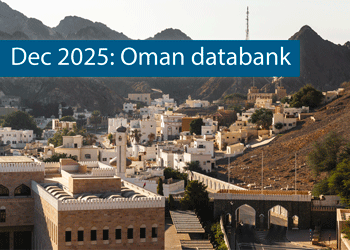 Oman’s growth forecast points upwards
Oman’s growth forecast points upwards24 December 2025
-
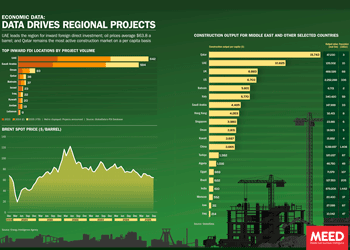 December 2025: Data drives regional projects
December 2025: Data drives regional projects23 December 2025
-
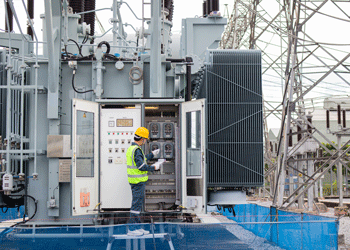 Local firm bids lowest for Kuwait substation deal
Local firm bids lowest for Kuwait substation deal22 December 2025
-
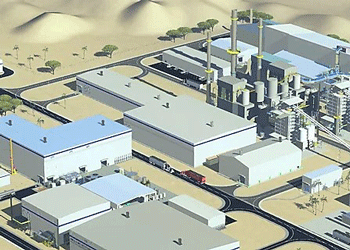 Saudi-Dutch JV awards ‘supercentre’ metals reclamation project
Saudi-Dutch JV awards ‘supercentre’ metals reclamation project22 December 2025
-
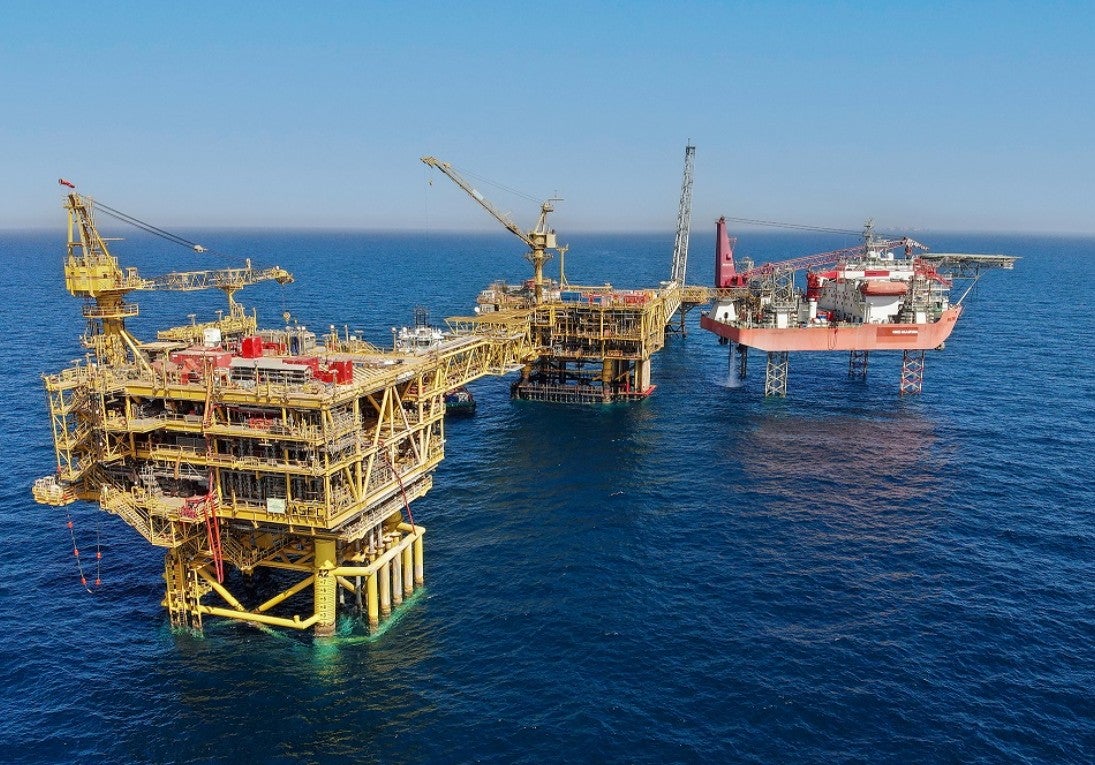 QatarEnergy LNG awards $4bn gas project package
QatarEnergy LNG awards $4bn gas project package22 December 2025
All of this is only 1% of what MEED.com has to offer
Subscribe now and unlock all the 153,671 articles on MEED.com
- All the latest news, data, and market intelligence across MENA at your fingerprints
- First-hand updates and inside information on projects, clients and competitors that matter to you
- 20 years' archive of information, data, and news for you to access at your convenience
- Strategize to succeed and minimise risks with timely analysis of current and future market trends

Related Articles
-
 Oman’s growth forecast points upwards
Oman’s growth forecast points upwards24 December 2025

MEED’s January 2026 report on Oman includes:
> COMMENT: Oman steadies growth with strategic restraint
> GVT & ECONOMY: Oman pursues diversification amid regional concerns
> BANKING: Oman banks feel impact of stronger economy
> OIL & GAS: LNG goals galvanise Oman’s oil and gas sector
> POWER & WATER: Oman prepares for a wave of IPP awards
> CONSTRUCTION: Momentum builds in construction sectorTo see previous issues of MEED Business Review, please click herehttps://image.digitalinsightresearch.in/uploads/NewsArticle/15306449/main.gif -
 December 2025: Data drives regional projects
December 2025: Data drives regional projects23 December 2025
Click here to download the PDF
Includes: Top inward FDI locations by project volume | Brent spot price | Construction output
MEED’s January 2026 report on Oman includes:
> COMMENT: Oman steadies growth with strategic restraint
> ECONOMY: Oman pursues diversification amid regional concerns
> BANKING: Oman banks feel impact of stronger economy
> OIL & GAS: LNG goals galvanise Oman’s oil and gas sector
> POWER & WATER: Oman prepares for a wave of IPP awards
> CONSTRUCTION: Momentum builds in construction sectorTo see previous issues of MEED Business Review, please click herehttps://image.digitalinsightresearch.in/uploads/NewsArticle/15306140/main.gif -
 Local firm bids lowest for Kuwait substation deal
Local firm bids lowest for Kuwait substation deal22 December 2025
The local Al-Ahleia Switchgear Company has submitted the lowest price of KD33.9m ($110.3m) for a contract to build a 400/132/11 kV substation at the South Surra township for Kuwait’s Public Authority for Housing Welfare (PAHW).
The bid was marginally lower than the two other offers of KD35.1m and KD35.5m submitted respectively by Saudi Arabia’s National Contracting Company (NCC) and India’s Larsen & Toubro.
PAHW is expected to take about three months to evaluate the prices before selecting the successful contractor.
The project is one of several transmission and distribution projects either out to bid or recently awarded by Kuwait’s main affordable housing client.
This year alone, it has awarded two contracts worth more than $100m for cable works at its 1Z, 2Z, 3Z and 4Z 400kV substations at Al-Istiqlal City, and two deals totalling just under $280m for the construction of seven 132/11kV substations in the same township.
Most recently, it has tendered two contracts to build seven 132/11kV main substations at its affordable housing project, west of Kuwait City. The bid deadline for the two deals covering the MS-01 through to MS-08 substations is 8 January.
https://image.digitalinsightresearch.in/uploads/NewsArticle/15305745/main.gif -
 Saudi-Dutch JV awards ‘supercentre’ metals reclamation project
Saudi-Dutch JV awards ‘supercentre’ metals reclamation project22 December 2025
The local Advanced Circular Materials Company (ACMC), a joint venture of the Netherlands-based Shell & AMG Recycling BV (SARBV) and local firm United Company for Industry (UCI), has awarded the engineering, procurement and construction (EPC) contract for the first phase of its $500m-plus metals reclamation complex in Jubail.
The contract, estimated to be worth in excess of $200m, was won by China TianChen Engineering Corporation (TCC), a subsidiary of China National Chemical Engineering Company (CNCEC), following the issue of the tender in July 2024.
Under the terms of the deal, TCC will process gasification ash generated at Saudi Aramco’s Jizan refining complex on the Red Sea coast to produce battery-grade vanadium oxide and vanadium electrolyte for vanadium redox flow batteries. AMG will provide the licensed technology required for the production process.
The works are the first of four planned phases at the catalyst and gasification ash recycling ‘Supercentre’, which is located at the PlasChem Park in Jubail Industrial City 2 alongside the Sadara integrated refining and petrochemical complex.
Phase 2 will expand the facility to process spent catalysts from heavy oil upgrading facilities to produce ferrovanadium for the steel industry and/or additional battery-grade vanadium oxide.
Phase 3 involves installing a manufacturing facility for residue-upgrading catalysts.
In the fourth phase, a vanadium electrolyte production plant will be developed.
The developers expect a total reduction of 3.6 million metric tonnes of carbon dioxide emissions a year when the four phases of the project are commissioned.
SARBV first announced its intention to build a metal reclamation and catalyst manufacturing facility in Saudi Arabia in November 2019. The kingdom’s Ministry of Investment, then known as the Saudi Arabian General Investment Authority (Sagia), supported the project.
In July 2022, SARBV and UCI signed the agreement to formalise their joint venture and build the proposed facility.
The project has received support from Saudi Aramco’s Namaat industrial investment programme. Aramco, at the time, also signed an agreement with the joint venture to offtake vanadium-bearing gasification ash from its Jizan refining complex.
Photo credit: SARBV
https://image.digitalinsightresearch.in/uploads/NewsArticle/15305326/main.gif -
 QatarEnergy LNG awards $4bn gas project package
QatarEnergy LNG awards $4bn gas project package22 December 2025
QatarEnergy LNG, a subsidiary of state-owned QatarEnergy, has awarded the main engineering, procurement, construction and installation (EPCI) contract for a major package for the second phase of its North Field Production Sustainability (NFPS) project.A consortium comprising the Italian contractor Saipem and state-owned China Offshore Oil Engineering Company (COOEC) has secured the EPCI contract for the COMP5 package. The contract value is $4bn, with Saipem declaring its share to be worth $3.1bn.
Milan-headquartered Saipem said the contract will run for about five years. The scope of work comprises engineering, procurement, fabrication and installation of two compression complexes, each including a compression platform, a living quarters platform, a flare platform supporting the gas combustion system, and the related interconnecting bridges. Each complex will have a total weight of about 68,000 tonnes.
Offshore installation operations will be carried out by Saipem’s De He construction vessel in 2029 and 2030.
MEED previously reported that the following contractors submitted bids for the NFPS phase two COMP5 package:
- Larsen & Toubro Energy Hydrocarbon (India)
- McDermott (US)
- Saipem/China Offshore Oil Engineering Company (Italy/China)
QatarEnergy LNG, formerly Qatargas, is said to have issued the tender for the NFPS phase two COMP5 package in the first quarter of the year.
Contractors submitted technical bids for the COMP5 package in late June, while commercial bids were submitted by 8 October, as per sources.
Based upon initial evaluation of bids by QatarEnergy LNG, L&TEH has emerged as the lowest bidder for the COMP5 package, followed by McDermott, with the consortium of Saipem and COOEC in third place, MEED reported in late October.
In the weeks following that, the project operator is said to have engaged all bidders for a final round of negotiations, during which the consortium of Saipem and COOEC is believed to have “clinched the deal”, according to sources.
The detailed scope of work on the COMP5 package covers the EPCI work on the following:
- Two gas compression platforms, each weighing 30,000-35,000 tonnes, plus jacket
- Two living quarters platforms, plus jacket
- Two gas flare platforms, plus jacket
- Brownfield modification work at two complexes
NFPS scheme
QatarEnergy’s North Field liquefied natural gas (LNG) expansion programme requires the state enterprise to pump large volumes of gas from the North Field offshore reserve to feed the three phases of the estimated $40bn-plus programme.
QatarEnergy has already invested billions of dollars in engineering, procurement and construction works on the two phases of the NFPS project, which aims to maintain steady gas feedstock for the North Field LNG expansion phases.
The second NFPS phase will mainly involve building gas compression facilities to sustain and gradually increase gas production from Qatar’s offshore North Field gas reserve over the long term.
Saipem has been the most successful contractor on the second NFPS phase, securing work worth a total of $8.5bn.
QatarEnergy LNG awarded Saipem a $4.5bn order in October 2022 to build and install gas compression facilities. The main scope of work on the package, which is known as EPCI 2, covers two large gas compression complexes that will comprise decks, jackets, topsides, interconnecting bridges, flare platforms, living quarters and interface modules.
The gas compression complexes – CP65 and CP75 – will weigh 62,000 tonnes and 63,000 tonnes, respectively, and will be the largest fixed steel jacket compression platforms ever built.
Following that, Saipem won combined packages COMP3A and COMP3B of the NFPS project’s second phase in September last year.
The scope of work on the combined packages encompasses the EPCI of a total of six platforms, approximately 100 kilometres (km) of corrosion resistance alloy rigid subsea pipelines of 28-inches and 24-inches diameter, 100km of subsea composite cables, 150km of fibre optic cables and several other subsea units.
Separately, QatarEnergy LNG awarded McDermott the contract for the NFPS second phase package known as EPCI 1, or COMP1, in July 2023. The scope of work on the estimated $1bn-plus contract is to install a subsea gas pipeline network at the North Field gas development.
In March this year, India’s Larsen & Toubro Energy Hydrocarbon (LTEH) won the main contract for the combined 4A and 4B package, which is the fourth package of the second phase of the NFPS project and is estimated to be valued at $4bn-$5bn.
The main scope of work on the package is the EPCI of two large gas compression systems that will be known as CP8S and CP4N, each weighing 25,000-35,000 tonnes. The contract scope also includes compression platforms, flare gas platforms and other associated structures.
LTHE sub-contracted detailed engineering and design works on the combined 4A and 4B package to French contractor Technip Energies.
NFPS first phase
Saipem is also executing the EPCI works on the entire first phase of the NFPS project, which consists of two main packages.
Through the first phase of the NFPS scheme, QatarEnergy LNG aims to increase the early gas field production capacity of the North Field offshore development to 110 million tonnes a year.
QatarEnergy LNG awarded Saipem the contract for the EPCI package in February 2021. The package is the larger of the two NFPS phase one packages and has a value of $1.7bn.
Saipem’s scope of work on the EPCI package encompasses building several offshore facilities for extracting and transporting natural gas, including platforms, supporting and connecting structures, subsea cables and anti-corrosion internally clad pipelines.
The scope of work also includes decommissioning a pipeline and other significant modifications to existing offshore facilities.
In addition, in April 2021, QatarEnergy LNG awarded Saipem two options for additional work within the EPCI package, worth about $350m.
QatarEnergy LNG awarded Saipem the second package of the NFPS phase one project, estimated to be worth $1bn, in March 2021.
Saipem’s scope of work on the package, which is known as EPCL, mainly covers installing three offshore export trunklines running almost 300km from their respective offshore platforms to the QatarEnergy LNG north and south plants located in Ras Laffan Industrial City.
Saipem performed the front-end engineering and design work on the main production package of the first phase of the NFPS as part of a $20m contract that it was awarded in January 2019. This provided a competitive advantage to the Italian contractor in its bid to win the package.
https://image.digitalinsightresearch.in/uploads/NewsArticle/15305330/main2239.jpg


